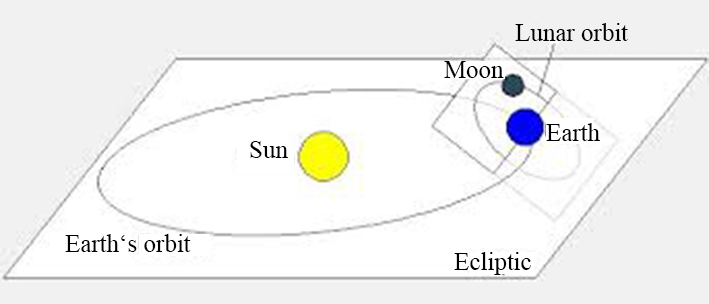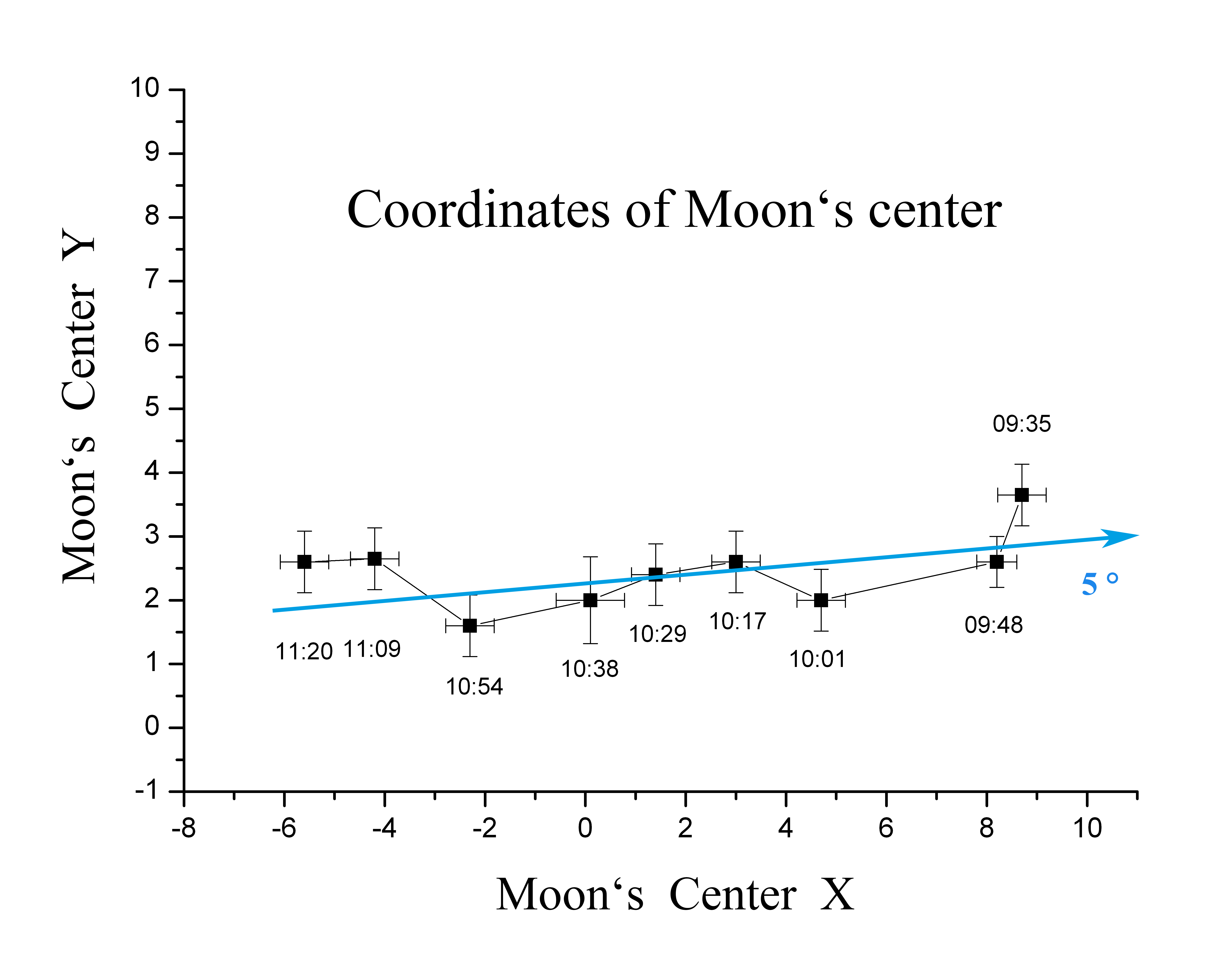 Deutsch Deutsch |
Solar Eclipse 2015 - Lunar orbit determination (1) | ||||||||||||||||||||||||||||||||||||||||||||||||||||||||||||||||||||||||||||||||||||||||||||
|
4b. Lunar orbit determination It's a great idea of the medieval astronomers Brahe, Copernicus and Galileo to transfer consequentially from a geocentric to a heliocentric solar system. In fact, Moon and Earth do not move opposite around Sun, like my image sequence suggests, but rather in the same direction. In doing so, Moon lags behind the earth. The daily or nightly arc of the moon is a result of:
(see: Fig. 40).
The transformation of one system into the other can be carried out from the image sequence too, by
putting Sun's center of all pictures into the origin (see fig. 35). Then the movements of Sun and Earth are
fixed and only the moon's orbit is shown. Within error limits I determined the orbital inclination to approximately 5°
(see: Fig. 41). Further ahead (3. My experiences and results) I had mentioned, that my relocation around 11:00 o'clock turned out as unfavorable. To determine the center of the sun, I had always used the upper left corner of my pictures as a reference. This reference was no longer given by the location change. According to this fact the error bars in Fig. 41 are not comparable to periods after 11:00 o'clock. On Internet you find a helpfull site to calculate all possible values of the sun- and moon-tracks in terrestrial reference system (in courtesy of © Özgür Aydin, sorry that site is in German language only). In the table below I have summarized the values for azimuth, elevation and distance in the range of my observation time.
Table 4: Azimuth, height of Sun and Moon, their differences and the Earth-Moon distance at Ludwigshöhe near Darmstadt during my observation period.
It can be seen, that the azimuths of Sun and Moon rise steadily, while their height differences
remain nearly the same. The difference of the azimuths decreases steadily and even gets retrograde,
compared to the observation point. Substracting the azimuths of the celestial bodies (Sun and Moon)
corresponds to a system-transformation from geocentric to heliocentric.
Take a look at an impressive animation of Moon's movement ( © Andi Boesch). By presetting coordinates for the place of observation and the period of the eclipse you obtain data for phase, height and distance of Moon, while selecting "Animations" as an option. Read more at: 5. More to Explore and get a better understanding of eclipses. Back to top Back to evaluating the image sequence Back to directory | |||||||||||||||||||||||||||||||||||||||||||||||||||||||||||||||||||||||||||||||||||||||||||||
| Copyright by Hans Joachim Ilgen since 1950 | |||||||||||||||||||||||||||||||||||||||||||||||||||||||||||||||||||||||||||||||||||||||||||||

